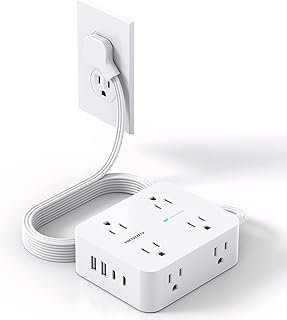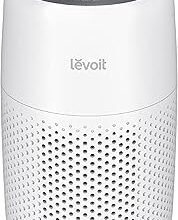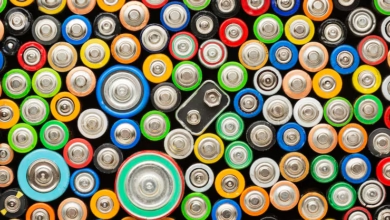ChatGPT said: Surge Protector Power Strips: Essential Protection for Your Electronics

In today’s modern world, we depend on electronics for almost everything. Whether it’s for work, entertainment, communication, or even managing household tasks, electronic devices have become integral to our daily lives. Given their high cost and the critical role they play, ensuring that these devices are protected from power surges is essential. One of the best ways to safeguard your valuable electronics is by using a surge protector power strip. In this article, we will explore everything you need to know about surge protector power strips—from how they work to why you should have one in your home or office.You know about theglobespot, openrendz and Buzzfeed.
What Is a Surge Protector Power Strip?
A surge protector power strip is a device that allows multiple electrical devices to be plugged into one outlet while offering protection against power surges and spikes. It works by diverting excess voltage caused by electrical surges away from the connected devices, preventing them from being damaged. These power strips are commonly used to protect electronics like computers, televisions, home entertainment systems, gaming consoles, and more.
While many power strips are designed to provide multiple outlets for convenience, only surge protector power strips offer this vital layer of protection. The added benefit of surge protection makes them indispensable in modern homes and offices, where multiple devices are plugged into a single outlet.
How Do Surge Protector Power Strips Work?
Surge protector power strips are designed to absorb and redirect excess electrical energy when a surge occurs. But how exactly do they manage this?
1. The Role of Metal Oxide Varistors (MOVs)
Most surge protector power strips use a component called a Metal Oxide Varistor (MOV) to absorb and control surges. The MOV is a semiconductor device that can change its resistance depending on the amount of voltage it is exposed to. When the voltage is normal, the MOV has high resistance, meaning it doesn’t affect the current flowing through the power strip.
However, when a surge occurs, the voltage spikes. This causes the MOV to become more conductive, essentially acting as a short circuit and redirecting the excess energy away from your devices and into the ground. The MOV will absorb and dissipate the extra energy, ensuring your devices are protected.
2. Clamping Voltage
The clamping voltage is the threshold at which the surge protector activates to protect your devices. It represents the level of voltage that will trigger the surge protector to divert the excess energy. Surge protectors with a lower clamping voltage will activate faster, providing better protection for sensitive electronics.
3. Joule Rating
The joule rating is a measure of how much energy a surge protector can absorb before it stops working. Surge protector power strips with higher joule ratings are capable of handling larger surges and will last longer. A power strip with a low joule rating might protect your devices in a small surge, but it could fail during a larger surge.
4. Response Time
The response time of a surge protector is the speed at which it reacts to a power surge. A surge protector with a fast response time can quickly redirect the excess energy before it reaches your devices. For optimal protection, you should look for a surge protector with a response time in nanoseconds (billionths of a second).
5. Grounding
For surge protection to work effectively, the surge protector needs to be properly grounded. This allows the excess energy to flow safely into the ground instead of causing damage to your devices. Many surge protector power strips come with a ground pin that should be properly plugged into the wall socket for full protection.
Why Do You Need a Surge Protector Power Strip?
While it might seem like a simple power strip is enough to handle your electronics, a surge protector power strip offers much-needed protection for a range of reasons. Here are a few key reasons why you should consider using surge protector power strips for your devices:
1. Protects Against Power Surges
The primary function of a surge protector power strip is to protect your electronics from power surges. Power surges can happen for various reasons, including:
-
Lightning strikes: A direct lightning strike or nearby strike can cause a massive surge of electricity in the power lines, which can destroy your electronics if not diverted.
-
Power grid issues: Power plants and transformers can experience fluctuations, causing voltage spikes that travel through the electrical grid and into your home.
-
Electrical appliances: Devices with large motors (such as refrigerators, air conditioners, and washers) can create power surges when they turn on and off, which can affect other devices connected to the same circuit.
A surge protector power strip absorbs or redirects this extra voltage, helping to keep your devices safe.
2. Safeguards Expensive Electronics
Electronics can be quite expensive, and replacing them can be a major financial burden. Devices such as computers, TVs, game consoles, and home theater systems often cost hundreds or even thousands of dollars. If one of these devices is damaged by a power surge, it could lead to significant repair or replacement costs. Surge protector power strips offer an inexpensive way to protect these costly items.
3. Prevents Data Loss and Damage
In addition to damaging hardware, power surges can also cause data corruption. For individuals who rely on computers for work or personal use, losing important data can be devastating. Surge protector power strips not only protect your hardware but can also help prevent loss of critical data, especially when used with devices like external hard drives, laptops, and servers.
4. Overload Protection
Many modern surge protector power strips also come equipped with overload protection. This feature helps prevent the power strip from overheating or catching fire if too many devices are plugged in at once. Overload protection is an additional layer of security that ensures your power strip will shut down if it detects too much power draw.
5. Convenience of Multiple Outlets
A surge protector power strip allows you to connect multiple devices to a single outlet, which is particularly useful when you have several electronics but limited outlets. Whether you’re setting up a home office, entertainment center, or computer workstation, a power strip gives you the convenience of plugging everything in while still protecting your devices from electrical hazards.
Types of Surge Protector Power Strips
There are different types of surge protector power strips available on the market. Some are designed for specific uses, while others offer additional features. Here are some common types:
1. Basic Surge Protector Power Strips
These are the most common type of surge protectors and provide a basic level of protection for your devices. They typically include several outlets and offer surge protection against minor voltage spikes. If you’re only looking to protect a few devices, a basic surge protector might suffice.
2. Heavy-Duty Surge Protectors
Heavy-duty surge protectors are designed for use with high-powered devices or sensitive electronics that require extra protection. These power strips come with higher joule ratings, faster response times, and advanced features like EMI (Electromagnetic Interference) and RFI (Radio Frequency Interference) filtering to protect devices from signal interference and power quality issues.
3. Surge Protectors with USB Ports
Many modern surge protectors include built-in USB ports for charging smartphones, tablets, and other USB-powered devices. These are great for convenience, as they allow you to charge multiple devices without taking up additional outlets.
4. Smart Surge Protectors
Smart surge protectors can be connected to your home Wi-Fi network and controlled via a smartphone app. These surge protectors allow you to monitor energy consumption, turn outlets on and off remotely, and receive notifications if a surge occurs. Some smart models also come with built-in voice control compatibility for use with smart assistants like Amazon Alexa or Google Assistant.
How to Choose the Right Surge Protector Power Strip
When shopping for a surge protector power strip, it’s important to consider several factors to ensure you’re getting the best protection for your needs:
-
Joule Rating: As mentioned earlier, the joule rating tells you how much energy the surge protector can absorb. Look for a surge protector with a higher joule rating for better protection, especially if you’re using it for expensive or sensitive devices.
-
Clamping Voltage: A lower clamping voltage is generally better, as it means the surge protector will react faster to voltage spikes.
-
Number of Outlets: Choose a power strip with enough outlets to accommodate all the devices you want to plug in. Some models also come with additional features, such as rotating outlets for better flexibility.
-
Warranty: Many surge protector manufacturers offer warranties on their products. Check if the surge protector comes with a warranty that covers damage to connected devices in case of a surge.
-
Additional Features: Depending on your needs, you might want a surge protector with extra features like USB charging ports, overload protection, or EMI/RFI filtering.
Conclusion
A surge protector power strip is a simple but essential device for protecting your electronics from power surges, voltage spikes, and other electrical hazards. Whether you’re looking to safeguard your computer, home entertainment system, or other valuable electronics, investing in a high-quality surge protector power strip is an important step in prolonging the lifespan of your devices and preventing costly damage. With various types and features available, there is a surge protector to suit every need.
By understanding how surge protectors work and the features to look for, you can make an informed decision and ensure that your electronics stay safe and secure for years to come.



